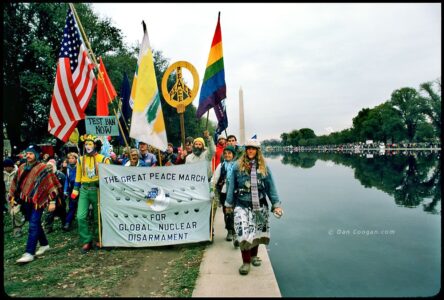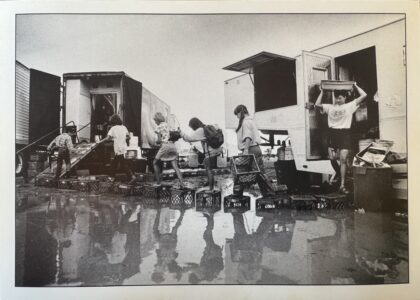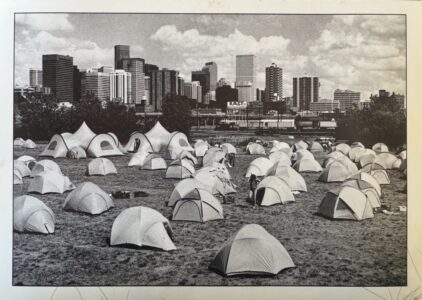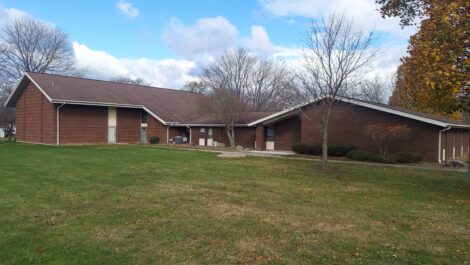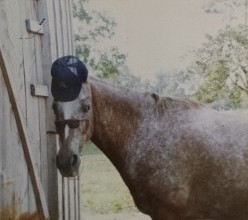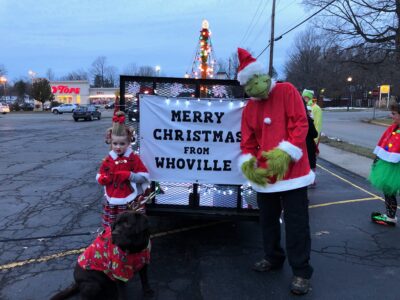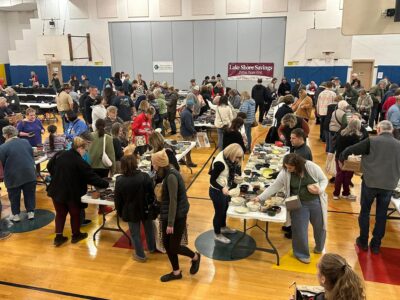Mission with message: Great Peace March to mark 40 years in July
- Photographs by Jeff Share and Dan Coogan from 1986 Photo of marchers near the end of Great Peace March.
- Marchers find unique ways to overcome obstacles; Lincoln, Neb.
- “Peace City” outside of Denver.
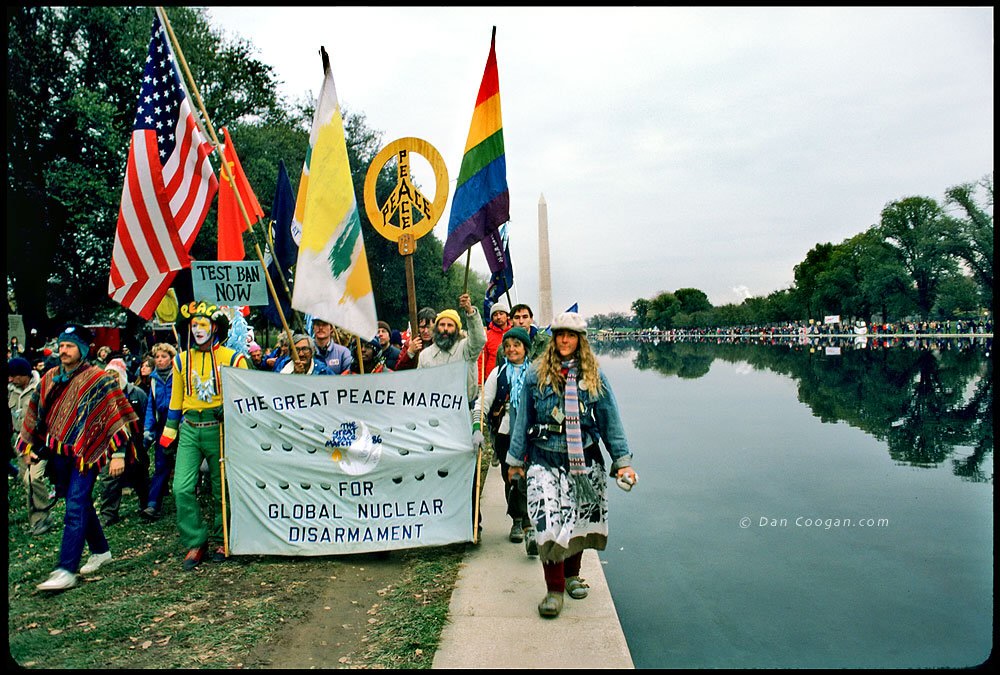
Photographs by Jeff Share and Dan Coogan from 1986 Photo of marchers near the end of Great Peace March.
In July, Chautauqua County will host the 40th reunion of the Great Peace March (GPM), a historic cross-country protest calling for the elimination of nuclear weapons. Former marchers, supporters, and others will join at the Great Blue Heron Farm and Event Center to reflect, reconnect and renew their commitment to a world without nuclear weapons.
What was the Great Peace March?
In 1986, 1,200 people gathered to walk across the United States — from Los Angeles to Washington D.C. — covering thousands of miles over a span of nine months. Though this number fluctuated throughout the journey, their commitment to nuclear disarmament remained strong. These dedicated marchers primarily came from the United States, and together they represented every age and walk of life.
The marchers created what they called “Peace City,” a self-sufficient community that included schooling, teen centers, and kitchens. Every aspect of the community was kept afloat by the volunteers participating in the march. Everyone pitched in, including a self-appointed public relations team that kept the GPM in the news.
They walked for about 15 miles a day, four days a week; everyone helped out with Peace City needs. Three semi-trucks carried the marchers’ tents, belongings, and supplies, and everybody volunteered to make the march possible. Each marcher had two 1- by 2-foot crates to contain their life possessions across the states. Across the Mojave Desert and through the Rocky Mountains, the marchers’ strong sense of community allowed them to overcome challenges. Their shared vision of a world free from nuclear weapons contributed to their stamina.
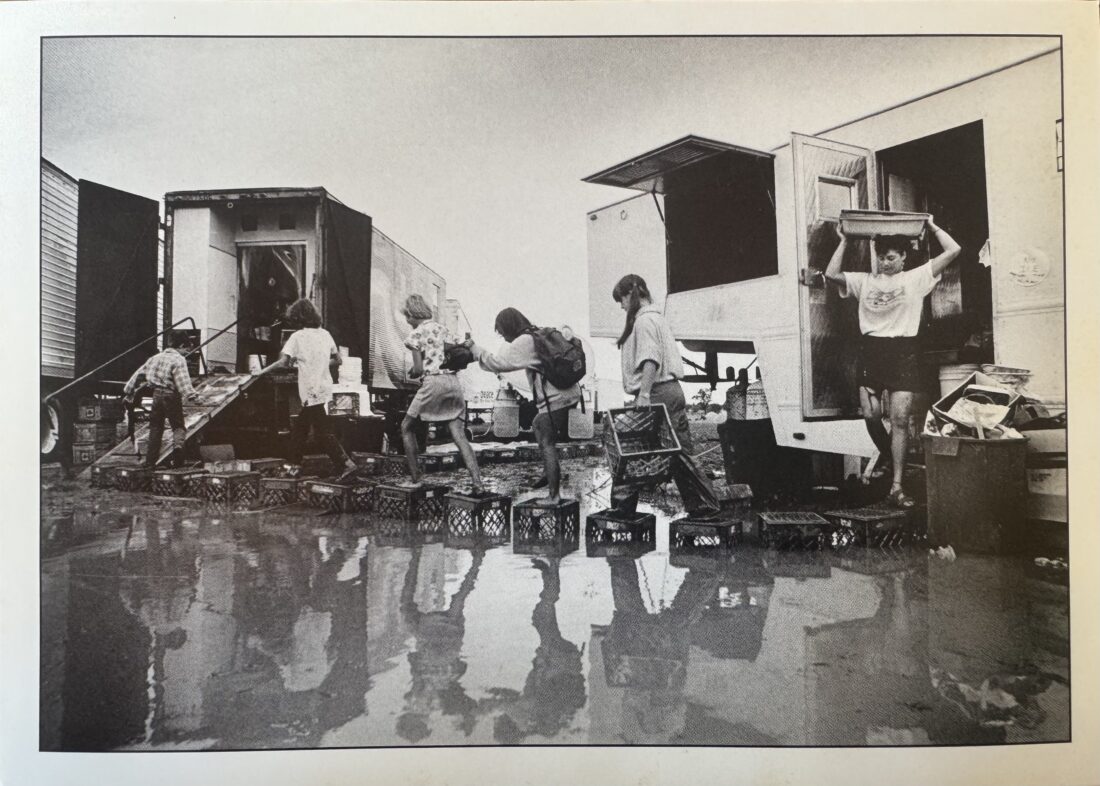
Marchers find unique ways to overcome obstacles; Lincoln, Neb.
Meet the
Reunion Team
Five marchers continue dedicating their time to the GPM as part of the reunion committee. Bill O’Neill, a journalist both before and after the march, was co-director of the Media Relations department and has helped plan seven previous GPM reunions.
The GPM first intrigued him as a type of adventure, but quickly turned him into a “passionate activist for a cause with enormous stakes.” Another marcher, Diane Clark, was with the GPM from the start in Los Angeles. She was a school teacher who first volunteered to collect litter, and after some time took on the role of “Mayor of Peace City.” Marek Parker, now a social worker, activist, and amateur photographer, brought creativity and energy to the March through his work with the comedy team “Bits and Peaces.” His experience was an adventure, and a chance for him to “put his feet into action in support of his ideals and beliefs.” Like Marek, Sam Kelley joined the GPM out of a desire to work for peace and justice. Leaving community college to participate, he took part in Campscape (logistics) and helped Clark in the mayor’s office (outreach and clerical). Last, Ann Stillwater: an educator and retired school nurse who was only on the march for a few days, yet is still deeply committed to nuclear disarmament. Ann says, “it is an existential issue to all people and the Earth.” These marchers came together to organize the 40th reunion, choosing Western New York as an ideal location.
Why It Still Matters
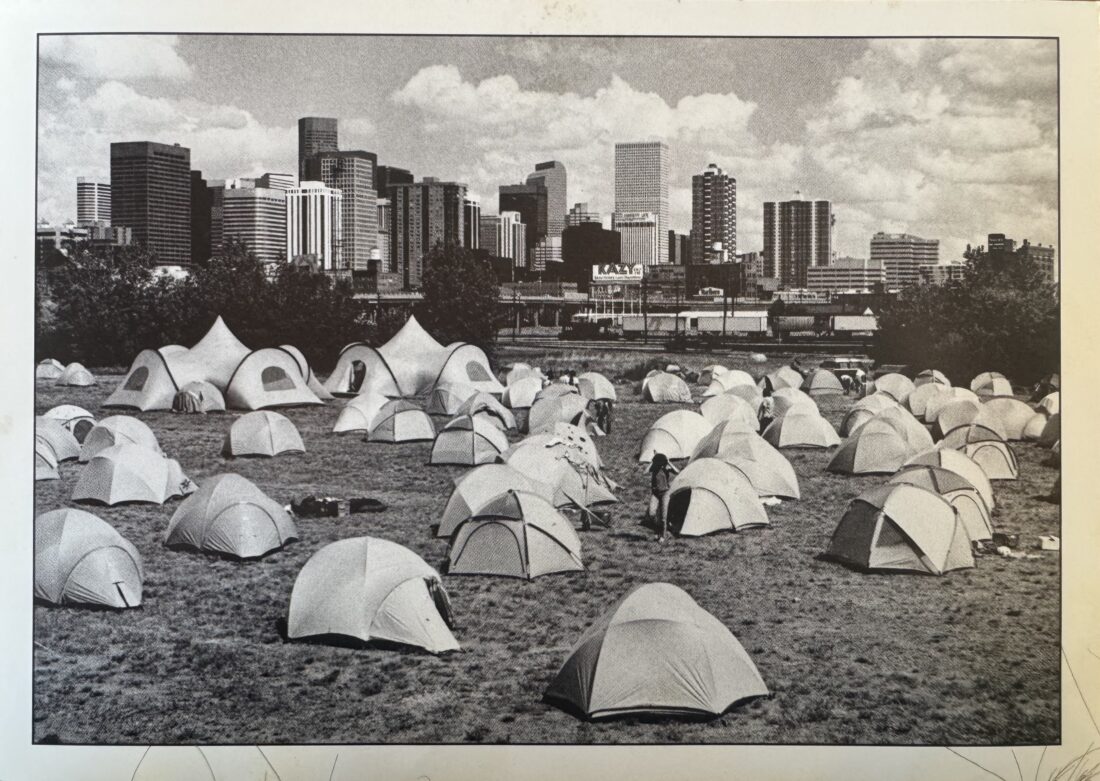
“Peace City” outside of Denver.
In 1986, marchers believed that nuclear weapons should, and would, be banned. Four decades later, the threat of nuclear weapons remains a global issue. During the GPM in 1986, the two nuclear powers of the world–the United States and Soviet Union–used fear tactics to promote peace through the fear of nuclear annihilation (MAD — Mutual Assured Destruction). The possibility of nuclear attack is even more prevalent now. A total of nine countries now have nuclear capability: United States, Russia, China, France, United Kingdom, India, Pakistan, Israel, and North Korea. The GPM reunion is a reminder that nuclear proliferation has only increased. However, coming together in peace is a reminder to hope for a future without nuclear weapons.
Reunion in Chautauqua
The 40th reunion is happening in July 2026 at the Great Blue Heron Farm and Event Center in Sherman. The marchers will recreate a “mini Peace City” while being surrounded by nature. They will share personal stories, updates, and what they are doing now to create a more peaceful world. Remembering the commitment that took place in 1986 is not only a recognition of the past, but an inspiration to future generations.

